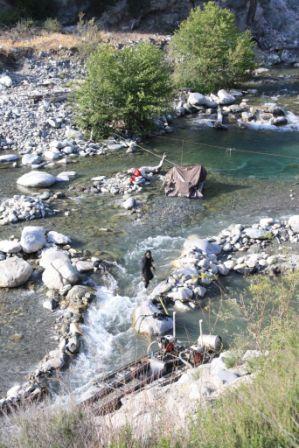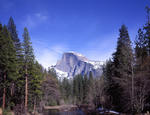
This one is too big: http://klamathriver.org/images/KlamathRiverSuctionDredge.jpg




September 19, 2009 06:43PM | Admin Registered: 16 years ago Posts: 17,145 |
September 19, 2009 06:52PM | Registered: 16 years ago Posts: 1,232 |
September 19, 2009 07:16PM | Registered: 16 years ago Posts: 1,882 |
September 19, 2009 07:25PM | Registered: 16 years ago Posts: 1,232 |
Quote
tomdisco
Vince,
I wonder if we watched the same You Tube video? It was evident from the video that the sediment went far more than just a few feet, it clouded downstream for quite a ways. Fine sediment does not fall out of suspension in a few feet. It can go on for miles. Also, you apparently ignored the portion where they explained the imbalance created in the disburbance of small underwater insects which fish feed on. Lastly, unearthing old mercury deposits from years ago is no small matter. That stuff is pure poison. I would not so easily dismiss the environmental studies and biology of fish habitats. Panning for gold is low impact. Suction dredging is something else altogether.
Jim
September 19, 2009 09:07PM | Admin Registered: 16 years ago Posts: 17,145 |
September 19, 2009 09:08PM | Registered: 16 years ago Posts: 1,882 |
September 19, 2009 09:10PM | Admin Registered: 16 years ago Posts: 17,145 |
September 20, 2009 12:08AM | Registered: 16 years ago Posts: 1,876 |
Quote
Vince
And don't forget much of the plight of the salmon is due to the sale of water to SoCal, which to my knowledge has no salmon runs.
September 20, 2009 08:44AM | Registered: 16 years ago Posts: 1,232 |
Quote
szalkowski
Quote
Vince
And don't forget much of the plight of the salmon is due to the sale of water to SoCal, which to my knowledge has no salmon runs.
One might want to give due credit to the agricultural interests in the Great Central Valley:
http://en.wikipedia.org/wiki/Tulare_Lake
[One of my prized possessions is a framed page of North America from a 1847 altas. It clearly depicts two "Tule Lakes" in the valley. Many present-day road maps still show the location of these lakes, labelling them as dry lakes. During the exceptionally heavy rains that occurred about 15 years ago, the southernmost location, being used for growing cotton at the time, was temporarily reclaimed by Mother Nature for water storage.]
